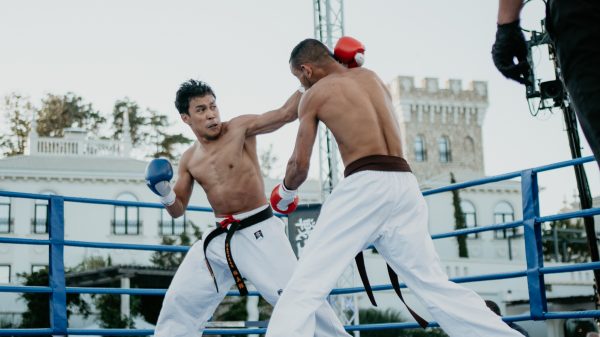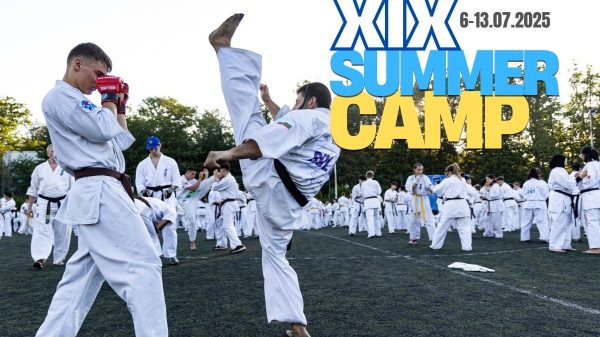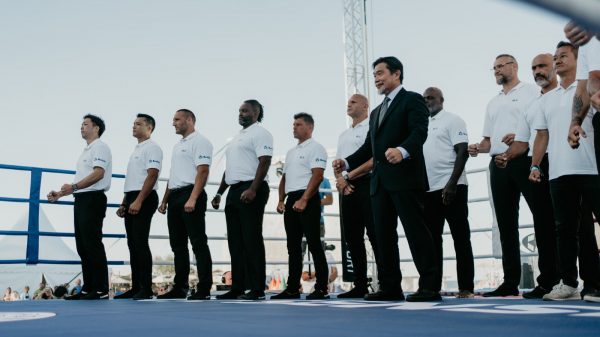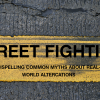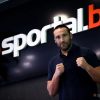The article was originally published on the website: the-martial-way.com
Almost anytime I post a video of a Kyokushin bout there are one or more people who either comment on how it isn’t “realistic” because they don’t punch to the face, or, they ask the question of why they don’t. I decided to do some research and create a post that I could just share anytime those comments or questions come up.
That being said, I wasn’t able to find a definitive answer, although a lot of speculation and hearsay. I would love to get a clear answer, perhaps from someone in the early days, or someone who asked Sosai Oyama directly.
From what I have gathered, in the early days of Kyokushin karate training, bare-knuckle strikes to the face were allowed, but this resulted in many injuries, and blood, which caused some students to withdraw from training. Also, they wanted the matches to last, be a challenge, and not end due to cuts. They did for some time wrapping their hands in towels, but Sosai Oyama believed that wearing protective gloves would detract from the realism that the style emphasized.
Therefore, it was decided that hand and elbow strikes to the face, head, and neck would no longer be allowed in training and competition. Furthermore, Japan at that time, and today, along with many governments around the world, do not allow bare-knuckle strikes to the head in any sanctioned competitions.
As a side, google Irish bare-knuckle fighting and you will see for yourself the devastation this leaves.
By the 1990′s when Sosai was still alive and Kyokushin achieved such enormous popularity, all Kyokushin tournaments, including the world tournaments held in Japan, did not allow the competitors the use hand strikes (punches, elbows, etc.) to the head and face. This was done originally for an obvious reason, as stated above. No one wanted to see so many competitors bloodied and sent to the hospital after competitions. I have also read that the Japanese public feared that competitors would die at the first full-contact tournaments held by Mas Oyama in the late 1960′s if face-punching were allowed.
According to Kancho Hatsuo Royama, an early student of Sosai Mas Oyama and head of Kyokushin-kan, what differentiates the competitors of the earlier era of Kyokushin and Kyokushin competitors of the present is:
Those early students of Oyama Dojo (preceding the founding of the Kyokushinkaikan), and of early days at the Kyokushinkaikan, practiced full-contact kumite in the dojo in which punches to the head and groin (and grabbing and throwing) were all legal. This means that the Japanese fighters of the earliest Kyokushin tournaments fought with face/head punches in the dojo, and only limited their strikes to body blows at the tournaments. These fighters, therefore, knew how to defend their faces from punches. Those reflexes were well developed. According to Kancho Royama, however, a tragic development in the evolution of Kyokushin then ensued. A new, younger generation came along which aspired only to win Kyokushin tournaments in which it wasn’t necessary to develop face/head punch defensive techniques and reflexes, and the majority of all Kyokushin practitioners ceased to practice defenses against that would-be-critical aspect of what would be any real self-defense situation.
When the first Kyokushin champions were sent to fight in the K-1 kickboxing rings, following Mas Oyama’s death, they were tragically defeated, leading to a critical collapse in the popularity of Kyokushin in Japan. The Japanese public no longer believed Kyokushin to be the world’s strongest karate.
Kancho Royama points out that it is critical that we, in Kyokushin-kan, “reclaim what was lost. As karateka, we must develop self-defensive reflexes against hand strikes to the head.”
Kyokushin-kan has reintroduced face striking, with tournaments for both strikes to the face, and those without. For those who wish to compete with the strikes, and those who don’t. Here is a compilation of their face striking tournaments in Japan:
I will quote Azam Ahmed, who is found on a few martial arts forums and someone I respect in knowledge and history:
“If you read any of Sosai Oyama’s books or watch footage of the man himself – he stresses the mental aspect of martial arts more than anything else. He has on many occasions said technique/stamina are what constitutes kumite – but technique/stamina will only take you so far. Mental toughness/martial spirit is what allows you to push through your physical limits – in my mind at least the person with the greater will & sense of purpose will prevail, if not immediately – eventually.
People often underrate or undervalue how powerful willpower/spirit can be. It’s only when you’ve reached your limit or are in a tough place that you realize how important it can be. Pain is a great way to test & develop your will/martial spirit – knockdown karate is extremely painful when you remove (head strikes/open hand strikes to the face) because you remove the easiest way to strike/take out an opponent – it’s much harder to head kick someone – the result you get is extremely grueling matches in knockdown karate, where will/mental toughness is usually the dividing factor – i.e. who can push through? Mental toughness is what really builds character – and you get it regularly in training, more so in an environment where your physical limit is regularly being tested – both in kihon or kumite.
Sometimes it does come at the expense of what you really would expect – a punch in the face and that is one of the cons – mental toughness/conditioning being a pro. It depends though on which karateka you’re watching & his/her style – there are plenty of defensive Kyokushin fighters that understand angles/movement/parrying, etc – for some though the tactic is to slug it out with volume – you get a mix of both.
At least for me – I don’t think there is anything wrong with knockdown rules – ideally though I’d prefer Kyokushin exactly as it is now, with MMA stand-up style sparring normal knockdown rules have their place.”
I think this sums up for me as well. Though I don’t know the original reason for no punching to the face, I do believe practically speaking why there isn’t. And further, for me at least, Kyokushin is the strongest karate, not because of its great fighting ability, which I think it has, but because it has a history and reputation of indomitable spirit. The spirit of OSU! Never give up!
OSU!








